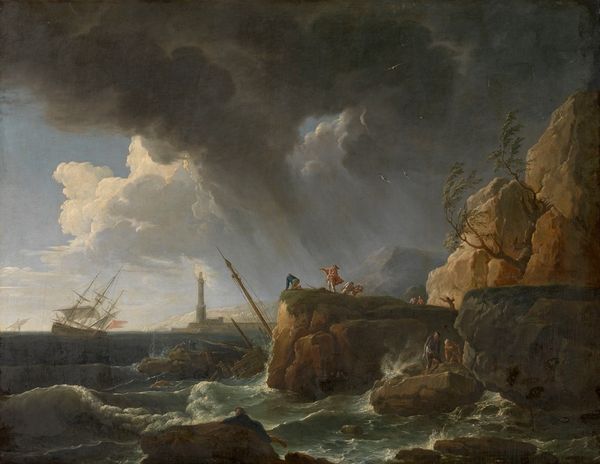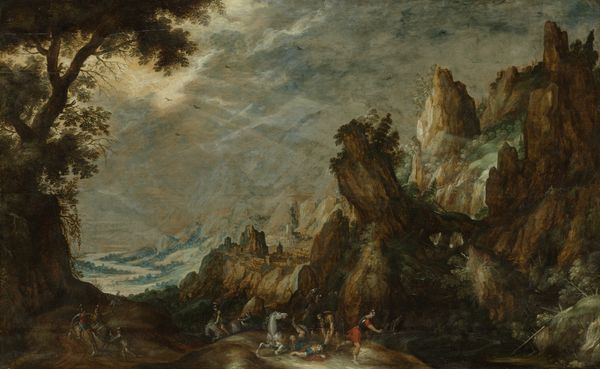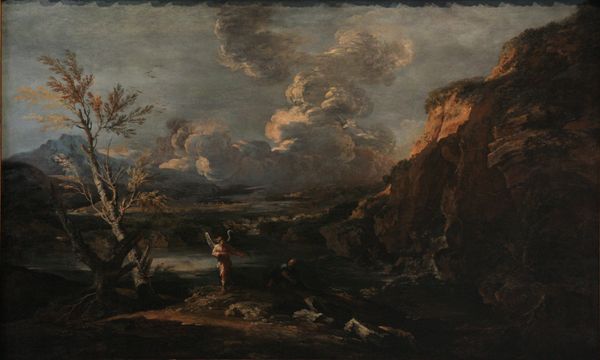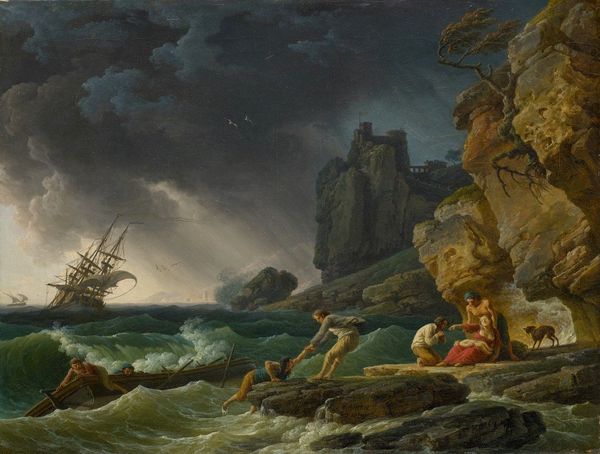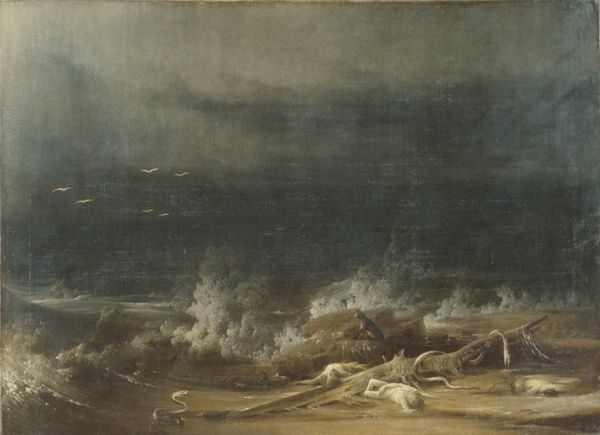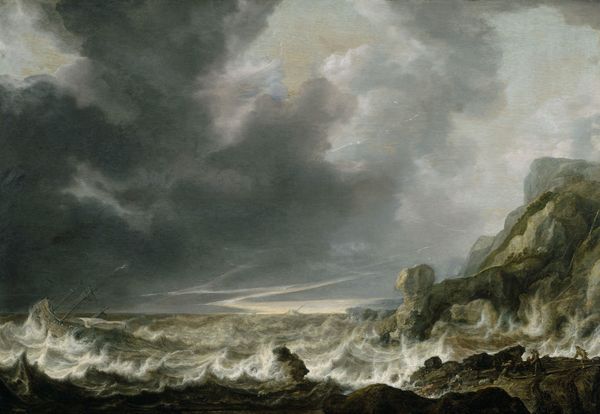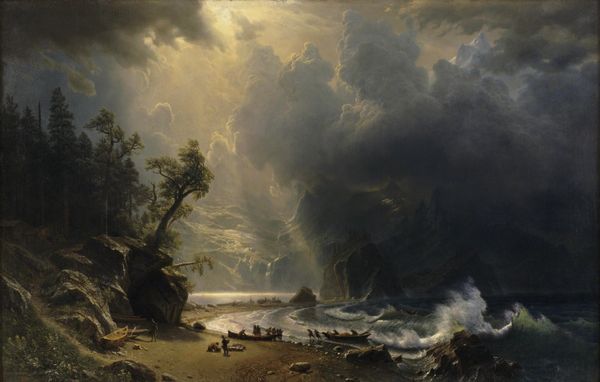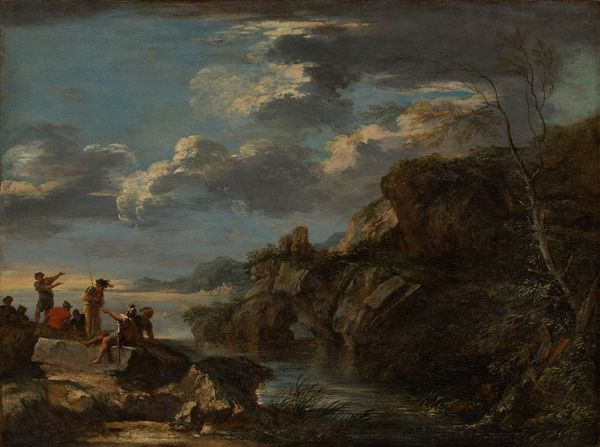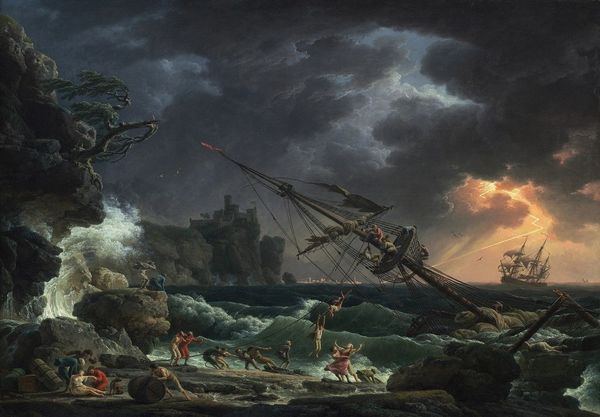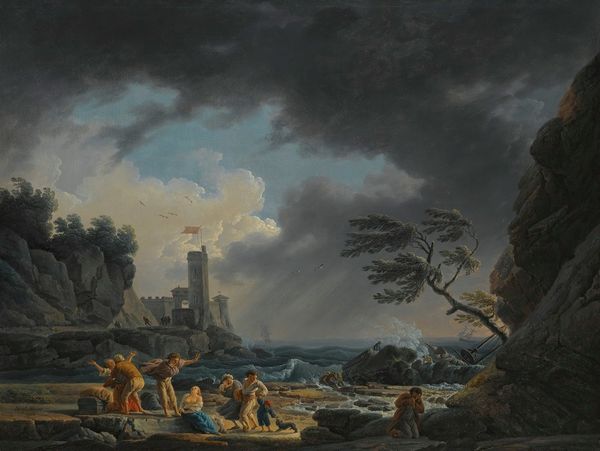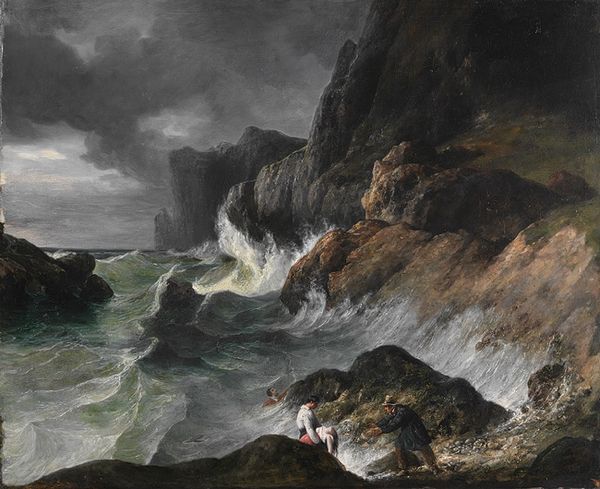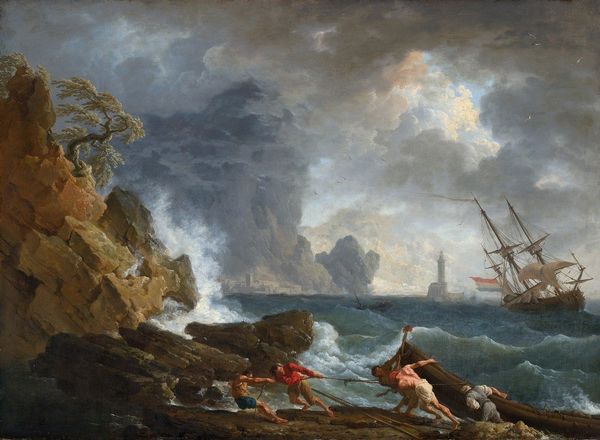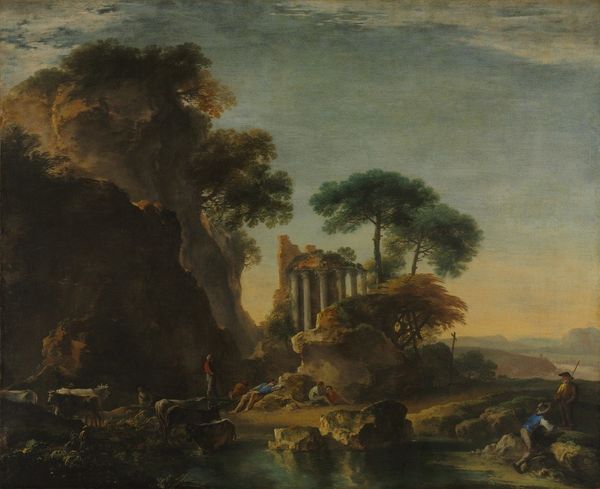
painting, oil-paint
#
baroque
#
dutch-golden-age
#
painting
#
oil-paint
#
landscape
#
cityscape
#
history-painting
#
realism
Dimensions: height 85.5 cm, width 108.2 cm
Copyright: Rijks Museum: Open Domain
Curator: Oh, this is striking. Talk about dramatic! Editor: It is, isn't it? It’s Jan Asselijn’s, "The Breach of the Saint Anthony’s Dike near Amsterdam," painted in 1651. You can find it in the Rijksmuseum. The use of oil on canvas is masterful in capturing this moment. What are you seeing there? Curator: Immediate drama. A landscape wrestling with dark emotions—you see this red cloak so flamboyant amid the impending doom and flood. That pop of color pulls my eye, telling some story of resilience or perhaps…folly? Editor: I see it as a potent symbol of human defiance against the raw force of nature. The broken dike signifies not just a physical collapse, but also perhaps a societal one. Water, a classic symbol of chaos, unleashed. Curator: It's also intriguing how Asselijn balances realism with almost theatrical drama. You’ve got these everyday folk, struggling against something elemental. But there's also a composed nature with calculated artistry. Is that structure a crumbling home? How much has been sacrificed to live here? The weight of it. Editor: Absolutely. The houses clinging to what remains of the structure represent vulnerability, each building standing for more than shelter. The event depicted wasn’t merely a landscape scene; it echoed deep cultural fears about safety and prosperity of the time. Think of the paintings by Rembrandt in these days...there were real risks from rising tides to merchants on their luck in trade. Curator: Mmm. And that dark, churning sky practically spits rage. The high horizon line kind of squashes us viewers, amplifying the painting's overwhelming… moodiness? Editor: Consider too, that Amsterdam relied heavily on its dike system; this image taps into something primal – a community literally fighting against being swallowed. The symbol of water overtaking ground is pretty hard hitting, and not just relevant to that time and space, but still resounds with global warming at our front doors today. Curator: You're right! So beyond the immediate historical context, this scene taps into enduring human themes of resilience and anxiety, and beauty. Well, thanks for clarifying. Editor: Likewise, your spontaneous insights provided an immediate appreciation to the chaos! Let’s look at something a little less turbulent, shall we?
Comments
rijksmuseum about 2 years ago
⋮
During the night of 4-5 March 1651 the Saint Anthony’s Dike was breached near Amsterdam. Jan Asselijn portrayed the fiercely flowing water with a strong sense of drama. The billowing cloak of the man at the left shows that the storm is not yet over, however the squalls are already moving on at the right. The vivid red contrasts sharply with the bright blue of the parting clouds.
Join the conversation
Join millions of artists and users on Artera today and experience the ultimate creative platform.
